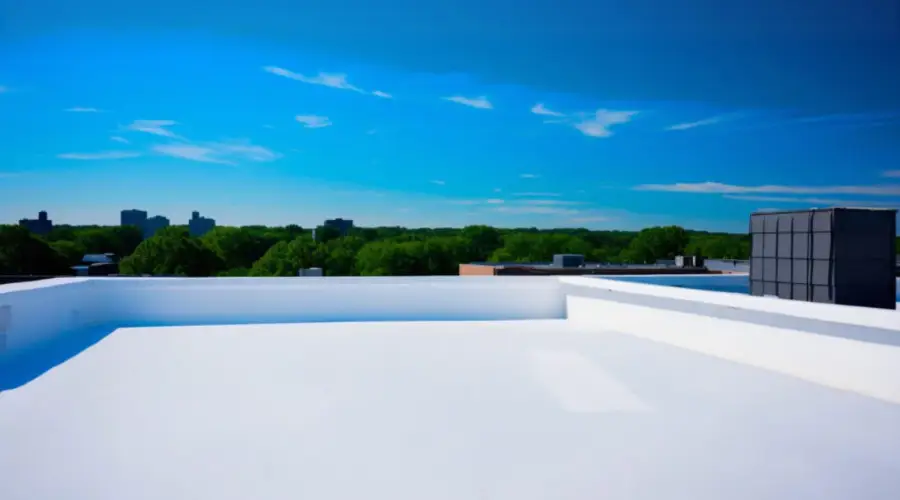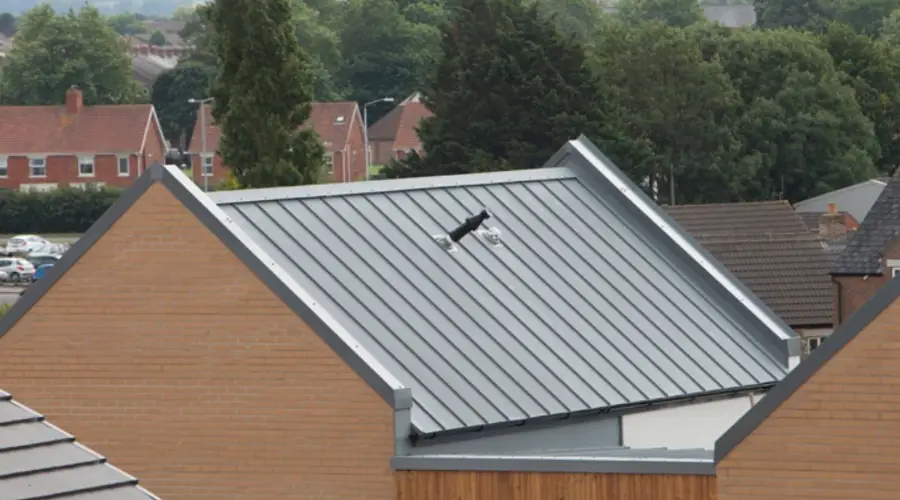A modern roof design is a way to improve the overall architectural style and appearance of any building. You might come across various options, but you need to consider the pros and cons of each to make an informed decision.
One of the designs that plays a significant role since ancient times is parapet roofs. It can be an ideal option to keep your buildings safer and look better than others. This blog includes the key features, types, potential benefits, and applications of parapet roofs. You can read it to have a better understanding before making a decision.
What is a Parapet Roof?
A parapet roof is a wall extension that goes higher than the roofline and can be efficiently located at flat roofs. You can easily spot this roof type that rises at the edge of a structure, such as a terrace, walkway, roof, bridge, or balcony.
A parapet roof is primarily constructed to provide safety to a building and also acts as an effective solution for a range of roofing issues. They come in numerous shapes and configurations, which can be utilised on plain, flat roofs.
Key Features of a Parapet Roof
Parapet roofs can be mostly found in modern structures, especially in urban areas. Herewith, we have listed out some of its key features:
Safety: Safety is the primary reason to go for a parapet roof. It prevents people from accidentally falling off the roof and also restricts a fire from spreading to adjacent buildings.
Wind Resistance: Tall structures are subjected to encountering various damages due to wind uplift on the roof. With the installation of a parapet roof, you can avoid such damages to roofing materials.
Aesthetic Appearance: A parapet roof can add visual interest to structures, creating a unique and awe-striking style. It efficiently conceals rooftop equipment like water tanks, satellite dishes, or HVAC units, providing an aesthetic appearance.
Types of Parapet Roofs
Based on the design and construction, parapet walls are classified into different types, such as:
Plain Parapet Roofs: Plain parapets are most commonly used in modern structures. As the name indicates, this is a basic fit of a flat wall extension. It typically extends the roofline and makes the house look taller.

Sloped Parapet Roofs: A roof that has a slope, like a slanted hilltop. Unlike being straight up and down, this type is aligned along with the roof. It creates a dynamic and visually appealing look compared to a flat, plain parapet.

Paneled Parapet Roofs: Unlike having a single, flat surface, this type has decorative panels. It can be made from various materials like brick, stone, and metal.
Stepped Parapet Roofs: Imagine a staircase; instead of steps, it becomes a wall. The wall is constructed in a series of steps that adds a unique architectural character to the overall building. It can be mostly seen in historical structures, especially in European countries.
Curved Parapet Roofs: Curved parapet roofs add a sense of sophistication to the building. They depict a flowing nature and create dynamic forms.
Benefits of a Parapet Roof
Parapet roofs offer several benefits to the structures, including:
- Parapet roofs act as a barrier, preventing people from accidentally falling from the roof.
- It restricts the spread of fire from one building to another.
- A properly designed parapet roof allows water runoff effectively, preventing water damage from seepage.
- It creates visual interest in a building’s façade.
- It hides any extra rooftop equipment installed, like water tanks, satellite dishes, or HVAC units.
- It actively prevents noise pollution from the surrounding environment and keeps your place calm and peaceful.
- It strengthens the building façade against thunderstorms, hurricanes, and other harsh weather damages.
Applications of Parapet Roofs
Parapet roofs are used in a wide range of applications, such as
Residential Buildings: Parapet roofs are mostly found in urban areas, creating a unique element of architectural interest. They provide enhanced safety for residents and rooftop access, resulting in increased usage in townhouses, single-family homes, and apartments.
Commercial Buildings: Parapet roofs are utilised in many commercial structures like hotels, office buildings, and retail stores. It not only enhances the building’s appearance but also improves the safety for maintenance and rooftop equipment.
Industrial Buildings: Industrial buildings like factories and warehouses are susceptible to fire accidents. Using a parapet roof can improve safety and prevent fire spreading from one building to another.
Potential Challenges and Solutions
These are the challenging situations you might encounter while installing parapet roofs:
- When cracks or damages around the parapet roof allow water to penetrate, resulting in water leakage, mold, or structural damage.
- Strong winds create significant pressure on the roof that causes potential damage to the roofing materials. Additionally, an improper design or construction can make the situation even worse.
- Extreme temperature fluctuations can create frequent contraction or expansion of roofing materials, creating cracks and damages in the parapet roof.
- Regular inspection and maintenance are essential to ensure the safety measures of workers.
How to Decide If a Parapet Roof is Right for Your Building?
The requirements of individuals vary from one to another. Beyond that, you have a number of significant factors to consider, like safety precautions, aesthetic appeal, maintenance, cost, and building regulations. With the consideration of all these points, you can make an informed decision. You can consult a professional to determine whether it fits your building plans and requirements.
Maintenance and Care
- Inspect often to identify the cracks, spalling, chips, or any other signs of moisture penetration.
- It is advisable to repair any damages at an earlier stage to avoid water penetration.
- Ensure the parapet roof is properly sealed to prevent water penetration.
- Safety equipment should be in good condition and properly maintained.
- If you live under harsh climatic conditions, it is recommended to inspect the roof often to notice any signs of damage.
Final Thoughts
Roof type plays a paramount role in enhancing the overall style of a building. It seeks immediate attention with its perfectly finished look. However, it is advisable to hire professionals to ensure the construction is made with quality materials to withstand harsh weather, and incorporate flashing and coping. Hopefully, this article provides you with essential knowledge about parapet roofs and their significance.
FAQs
The height of a parapet roof can vary depending on the requirements and local building codes. It generally ranges between 3 to 4 feet (i.e., 0.9 to 1.2 meters).
There are no climatic restrictions to install a parapet roof; however, the design and construction are essential to be adjusted according to the varying climatic conditions.
Yes, a parapet roof can efficiently support the installation of heavy equipment like HVAC units and solar panels, but the construction needs careful consideration to handle load distribution, wind loads, and water penetration.

